It is possible that, from a tourist point of view, Guadalajara be one of the most underrated provincial capitals in all Spain.
And the only reason we can find for this is the general lack of knowledge that exists about its rich heritage.
Apart from its monumental wealth that well deserves to be known, Guadalajara It is a relatively small city of Castilla la Mancha and in which the places to visit are, except for a few, very close to each other.
It also has many parks and there will be no shortage of good places to eat during our stay.
In any case, just to know the Infantado Palace, its main historical and artistic monument, it would be worth making a trip from nearby places such as Madrid or include it in a multi-day route through the province of Guadalajara.
All the information in detail
- 1 Curiosities of the history of Guadalajara
- 2 Best places to see in Guadalajara city in one day
- 3 Palacio del Infantado, main monument of Guadalajara
- 4 Other places to see in Guadalajara city
- 4.1 Alvar Fáñez Tower in Guadalajara
- 4.2 Palace of Antonio de Mendoza, Renaissance building in Guadalajara
- 4.3 Palacio de la Cotilla and its Chinese Room
- 4.4 Luis Lucena Chapel
- 4.5 Co-Cathedral of Santa Maria
- 4.6 Torreón del Alamín
- 4.7 Pantheon of the Infantado in the church of the monastery of San Francisco
- 4.8 Pantheon of the Countess of Vega del Pozo
- 4.9 Adoratrices and San Roque Parks
Curiosities of the history of Guadalajara
The place, on the banks of the Henares River, has been inhabited for millennia, but Guadalajara enters history as a stronghold in Muslim times, when it is known as Wad al-Hahara.
In 1085, Alfonso VI incorporates it into Castilla's crown, becoming a prosperous center where Christians, Jews and Muslims coexist.
For this reason they are preserved monuments with Mudejar influence.

From 1475, when Diego Hurtado from Mendoza receives the title of Duke of Infantado, Guadalajara becomes a kind of Renaissance stately court in the shadow of the Infantado House and other Mendoza lineages.
Some of the monuments that we can visit during a visit are due to the economic and political power of this family.
Best places to see in Guadalajara city in one day
The place to start tour of the monumental places of Guadalajara may be the Council Square.
Here we are very close to most of the interesting places and we can also access the Tourist Office local, where they provide all the information necessary for the visit.
Since we are there, we must not miss the apse of the medieval parish of San Gil, a beautiful example of Mudejar architecture.
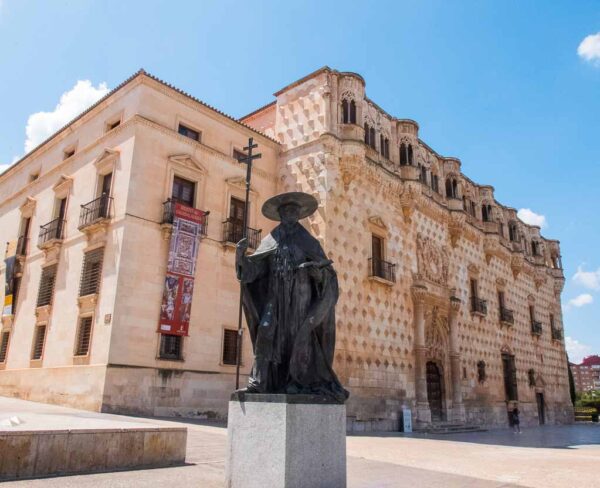
Attached to the apse, a wall reproduces the plasterwork of the Orozco Chapel.
This square is located a few meters from the Plaza Mayor and main Street, the axis of the city from the Middle Ages, and where you will have to walk to observe the local environment.
Palacio del Infantado, main monument of Guadalajara
With all certainty our steps will immediately lead us towards the Infantado Palace, since it is certainly the main monument of Guadalajara.
This palace is a unique building, the mature work of Juan Guas, who was architect of the Catholic kings and had already participated in works as important as the Segovia Cathedral, Lonja de la Seda in Valencia or Belmonte castles y Manzanares el Real.
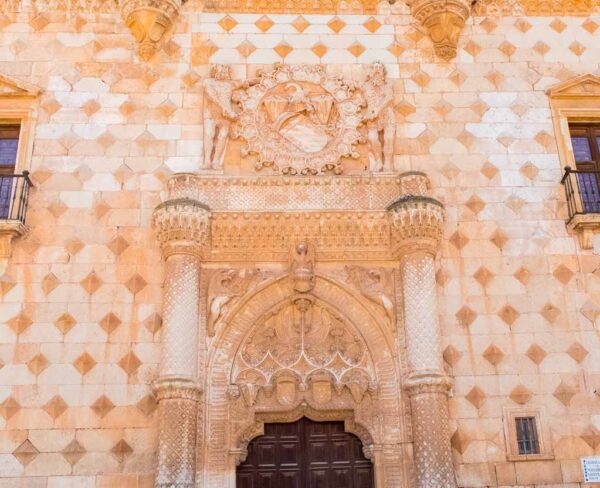
Originally from Brittany, he was familiar with the Gothic stonework of northern Europe, but he also took advantage of the solutions provided by the builders of Al Andalus and Italian classicist approaches.
Before exploring the interior, we can observe the complex from the outside.
So we can appreciate the main facade which is inspired by the Italian canon, but with aesthetic modifications of Andalusian origin and others typical of the mudejar palaces.
On one side we will see that the palace incorporates an extensive garden, something typical of Andalusian palaces or monasteries.
ORGANIZE your TRIP
- Don't forget your TRAVEL INSURANCE with a 5% discount
- Book the HOTEL for your trip
- RENT a CAR for your trip
- The best TOURS and EXCURSIONS in Spanish
- NO-LINE TICKETS for museums and monuments
- Best FREE TOURS around the world
- Book your TRANSFER from the airport
- eSIM card with INTERNET at the best price
In front of the palace we will see a sculpture dedicated to Cardinal Pedro González de Mendoza.
Guadalajara Museum in the Infantado Palace

The palace is now the headquarters of the Guadalajara Museum, which is made up of two permanent exhibitions to which are added the temporary ones.
La first permanent exhibition receives the name of Transits, and shows through paintings, sculptures and objects of archaeological and ethnographic origin, life in the province of Guadalajara.
Here we find everything from Roman statues to botargas masks, and from a painting of Alonso Cano Ceramics from 4.000 years ago.
La second permanent exhibition talks about the palace itself, the Mendoza and the power of Castile.
Fresco Rooms, mural paintings in the Palacio del Infantado
The most impressive thing is the spaces where it takes place, which in turn are one of the great surprises of the visit.
This is the Fresco Rooms, rooms of honor lavishly decorated in the 16th century by the Italian painter Romulo Cincinato and that cover walls and ceilings.
Courtyard of the Lions in the Infantado Palace

One of the most spectacular places in the palace is, without a doubt, the impressive Courtyard of the Lions.
The entire patio is decorated with figures of lions and griffins, elements typical of the Islamic tradition, but treated according to decorative schemes and Gothic architectural values.
All this makes the Infantado Palace Be a unique example in 15th century Spanish architecture.
Unfortunately the palace was bombed during the Civil War and several elements have not been able to be reconstructed.
Here you have useful information for your visit, with Hours and ticket prices for the Palacio del Infantado.
Other places to see in Guadalajara city
Beyond the palace, you can establish a route through different interesting places.
Since we are in this part we can approach the San Antonio Garden Park, adjacent to the palace gardens.
Alvar Fáñez Tower in Guadalajara
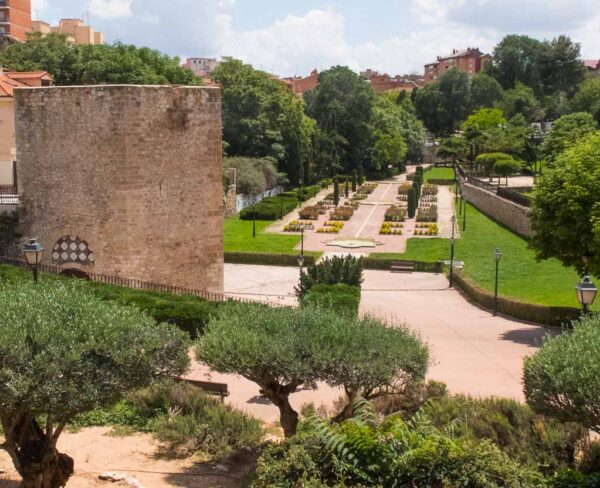
Here highlights the Alvar Fáñez Tower, from the 14th century and which would be part of the medieval wall.
Back towards the center we will begin to find several examples of the rich heritage of Guadalajara.
The first stop is the Church of Santiago, as soon as you enter the Teniente Figueroa Street.
The sober exterior contrasts with a spacious interior in which the vault and imposing Gothic pointed arches surprise.
Here you can sign up for Guadalajara Ghost Tour two hours long, and here you have various excursions and activities in the province of Guadalajara
Don't forget your Travel Insurance
Are you organizing your trip or getaway? Don't leave without take out your travel insurance before, and here we explain why. If you hire it with us, you have a 5% discount
Palace of Antonio de Mendoza, Renaissance building in Guadalajara
Right in front we find the entrance to the Convent of Mercy and Palace of Antonio de Mendoza.
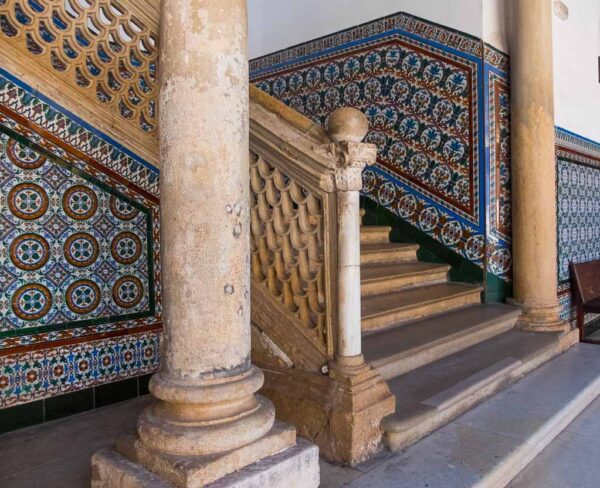
The most interesting thing is the latter, but since it is the headquarters of a secondary school, it can only be visit on weekend.
It is worth going on Saturday or Sunday to Guadalajara to be able to see it, especially the patio since it is one of the best examples of the first renaissance in the Iberian Peninsula.
We already find here that balance of shapes and volumes so characteristic of this style. The staircase that goes up to the upper floor and the great shield of Carlos V They are very interesting.
It was built a few years after the Infantado Palace, and it is curious to see how the architectural references had changed and the Gothic and Mudejar references had been forgotten to build in the purest Renaissance style.
Palacio de la Cotilla and its Chinese Room
We are going to have another of the great surprises of a visit to Guadalajara within walking distance, in the Cotilla Palace, a noble mansion from the 16th century.
There, on the upper floor, we find the Chinese Room, a memory of the oriental fashion that prevailed in decoration in Europe at the end of the 19th century.
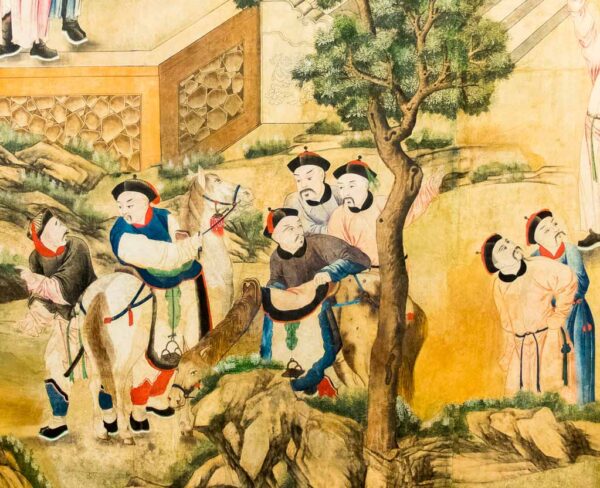
The walls of the living room are completely covered with a rice paper wall decoration in which different chinese atmosphere scenes.
The set is perfectly preserved, and the fact that hardly any similar examples have been preserved gives it exceptional value.
A few meters away we will find several monumental buildings.
The first is Convent of San José, with a very sober appearance on the outside, but with a certain baroque splendor inside.
Luis Lucena Chapel
More curious and interesting is the Funeral Chapel of Our Lady of the Angels, which is normally known as the Chapel of Luis de Lucena, which was attached to a church that has now disappeared.
Lucena He was the humanist at the service of the Vatican who designed the building.
The exterior of the chapel has some strength and the buttresses want to remember the Towers of Wisdom that flanked the Solomon's Temple in Jerusalem.
Inside, the fresco paintings.
Book your hotel, 15% discount, free cancellation
When planning your trip, we advise you to, well in advance, Book your hotel now on booking.com where you can find discounts from 15% and you will have a possible cancellation for free
Co-Cathedral of Santa Maria
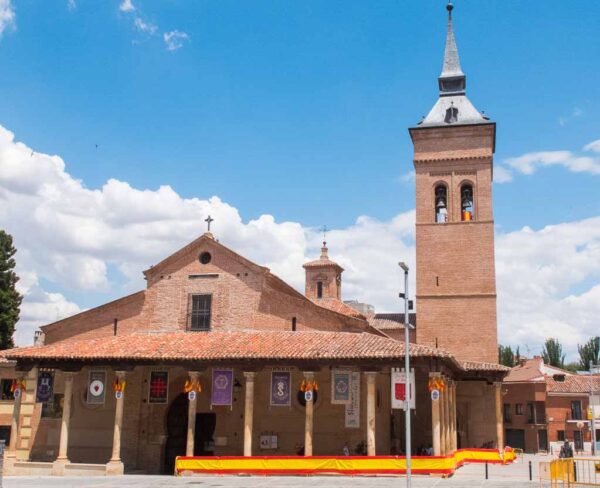
If we go down the street, we come face to face with the Co-Cathedral of Santa Maria.
It does not correspond to the image that we usually associate with a cathedral and its current appearance is due to the numerous renovations and extensions it has undergone over time.
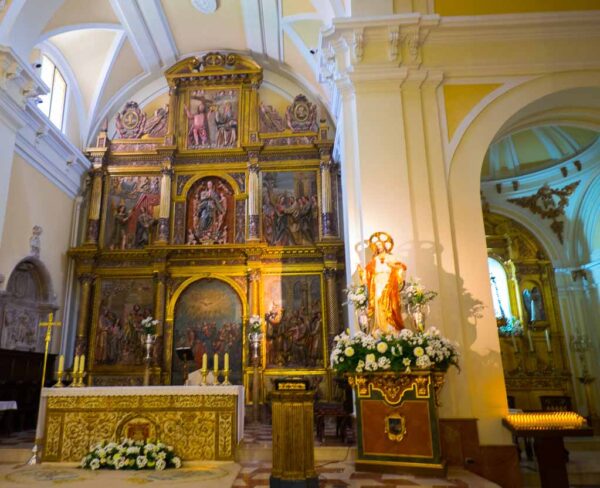
In its origin It was a Mudejar church, but now it shows renaissance and baroque elements.
In any case, the whole is very harmonious, and its most characteristic detail is the horseshoe arches of its doors.
Torreón del Alamín
If we wander around the back of the co-cathedral a little, we will immediately reach the Torreón del Alamín, which controlled the ford over the stream that passes at its feet.
Along this stream the Barranco del Alamín river park.
We continue towards an area where there are several parks, but first we will pass by the Bejanque Gate, Another rest of the 14th century walls who protected the city.
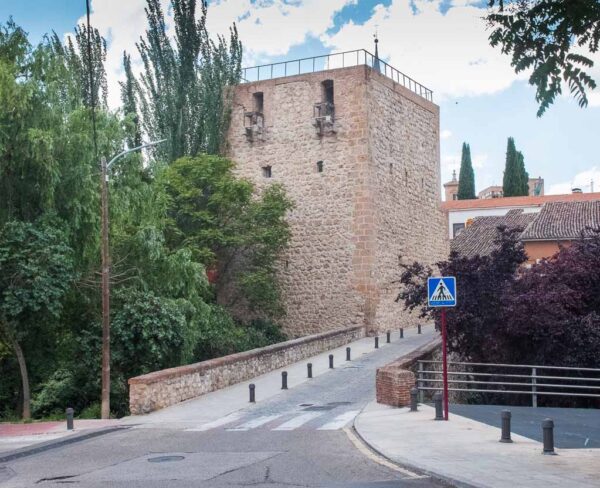
On the other side of the Bejanque Square We see an unusual-looking structure on which we can distinguish the silhouette of an old monastery crowning a small hill.
Pantheon of the Infantado in the church of the monastery of San Francisco
This is the church of the former monastery of San Francisco, another of the wonders of the Gothic architecture of the reign of the Catholic kings, built by Juan Guas.
Under the main chapel is the Pantheon of the Infantado, something later, which aims to imitate the Royal Pantheon of the Monastery of El Escorial.
Reserve your RENTAL CAR now for your trip
Looking ahead to your trip, book your rental car now on this website that offers you the best price guaranteed and allows you a possible free cancellation in most cases. Here you have more information with tips for renting a car
Pantheon of the Countess of Vega del Pozo
The last point of our tour of the little-known historical heritage of Guadalajara is the Pantheon of the Countess of Vega del Pozo.
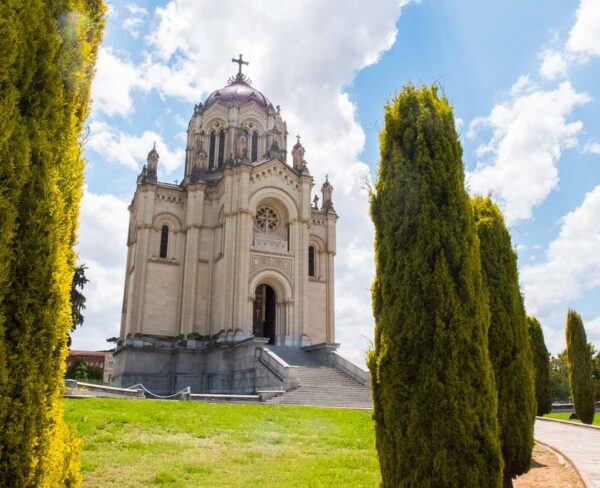
It is isolated and this is what it looks like from afar.
For many, it is one of the best examples of Spanish architecture from the late 19th century, and its interior is lavishly decorated. decorated with marbles and mosaics.
Adoratrices and San Roque Parks
We must take advantage of the fact that we have reached this part of the city to enjoy the Adoratrices and San Roque parks that we see next to the pantheon. AND
The latter is very shaded and there are several terraces where you can rest and have a snack.


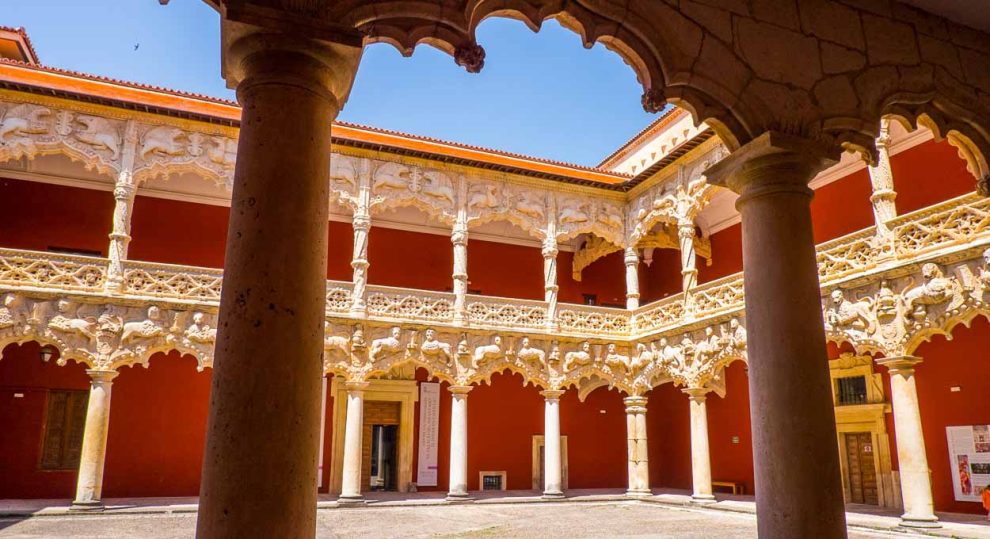


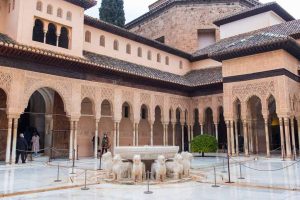











Comment